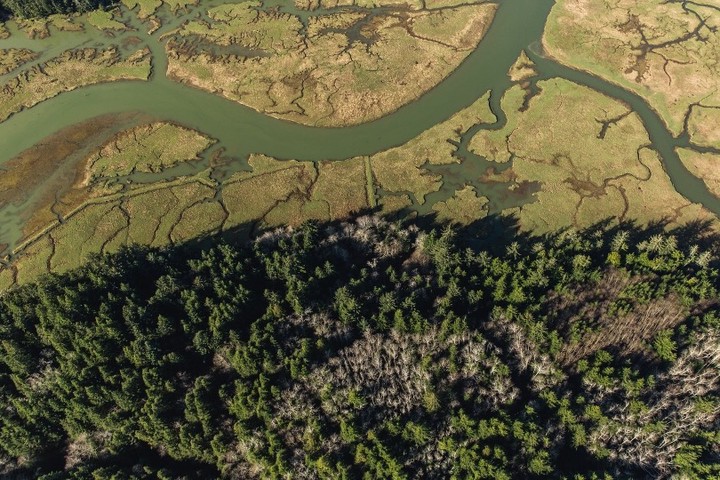Forest restoration and salmon resilience
 Photo by Chris Crisman
Photo by Chris Crisman
As climate change alters freshwater, estuarine, and marine habitats, Pacific salmon need increasing levels of conservation action to maintain population health. In the Pacific Northwest, USA, coastal forests and estuarine ecosystems have experienced extensive anthropogenic change since the early 20th century, and significant investments in restoration and conservation are currently underway. Restoration is increasingly implemented within the broad-scale context of changing ocean conditions, but we lack an understanding of the relative extent to which land-based actions can contribute to the resilience of salmon populations under climate change. We addressed this challenge using an integrated population model of chum salmon (Oncorhynchus keta) in the Willapa basin (southwest Washington, USA). We first conducted a retrospective analysis, evaluating how chum population dynamics have varied with watershed-scale forest management, estuarine invasive species control efforts, and changing ocean conditions from 1984 to 2022. Forest management and estuarine restoration both had measurable effects on population dynamics, as did nearshore ocean conditions. Using this model, we projected chum population dynamics under a range of future climate and forest management scenarios. Our results suggest the viability of our focal populations may decline with ocean warming, but that maintaining and promoting watershed-scale forest structural complexity can decrease the risk of population collapse compared to a scenario in which forests are intensively harvested. Overall, our findings illustrate the capacity for multiple conservation actions to contribute to salmon population health and suggest that watershed-scale forest management has the potential to bolster the persistence of salmon populations under climate change.